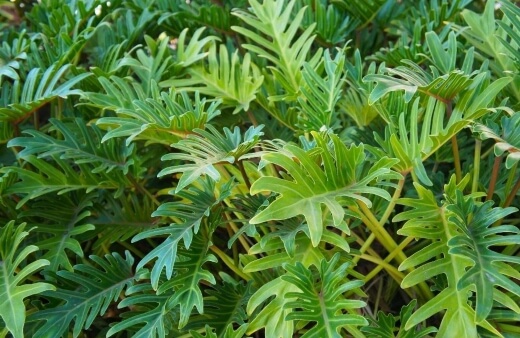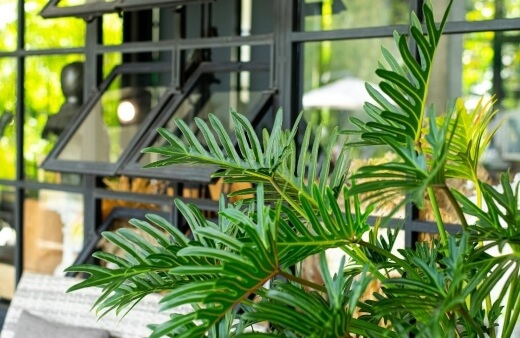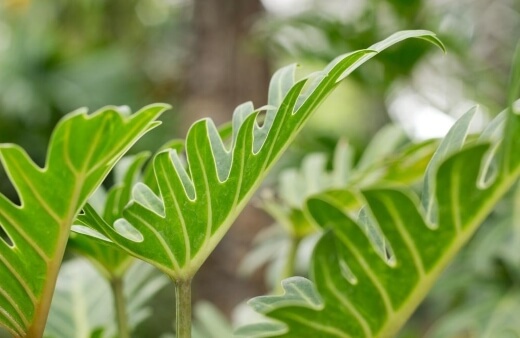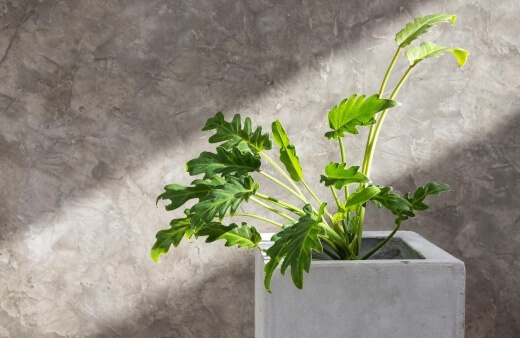The Philodendron xanadu is an upright growing cultivar of the popular Philodendron species, with wonderful, dense-growing exotic foliage. Although not always the most known variety, it’s a gorgeous plant that only gets better with age. Are you looking for a tropical plant for your home or along your poolside?
Here is everything you need to know about cultivating, caring for and growing Philodendron xanadu.
More...
Introducing Philodendron xanadu

The Philodendron xanadu, or Thaumatophyllum xanadu, also sometimes called Winterbourn, is one of the many tropical and subtropical species of Philodendron.
Part of the Araceae family, philodendrons are often chosen for growth indoors due to their love for warm, humid environments and adaptability to lower light conditions. This easy-to-grow variety is perfect for container growing and matches wonderfully with other indoor plants.
Also referred to as the Philodendron xanadu ‘Winterbourn’, the xanadu cultivar is known to grow wider rather than taller, reaching only 1.5 metres in height and 2 metres in length.
Unlike some of the other Philodendron species, this variety does not have a tendency to vine or trail. However, it does produce upright stems which bow out creating a full, globe like appeal.
It’s the ideal choice for atriums, living rooms or even along a poolside. However, it is important to note that it is toxic to dogs and cats.
How to Grow Philodendron xanadu

Before picking a spot to grow your Thaumatophyllum xanadu, it’s important to know which growing conditions are best suited to these plants. Although they are largely adaptable, they do require the right amount of light, moisture and warmth.
This cultivar of Philodendron will require more light than other plants in this species. The right level of daily light will ensure your xanadu maintains its compact growth habit. These plants need a medium to indirect light during the day.
Avoid keeping it somewhere that receives too much direct light, unless it’s the gentle morning sun. Too much harsh sunlight can cause leaves to scorch or lose colour and get a pale, bleached look.
If growing indoors, the general temperature and humidity are almost always suitable for these plants. Outdoors they may require a little extra attention. The Philodendron xanadu does best between temperatures around 23-26°C.
If you’re worried about humidity you can always supplement humidity by keeping your plants on a pebble tray with water or misting with a light mister from time to time. Of course, you can also consider keeping your plants in the bathroom to ensure it gets all the humidity it needs.
When it comes to picking the right potting medium, these plants prefer well-draining soils with a high level of organic matter and nutrients.
Potting & Repotting Winterbourn Plants
These plants enjoy nutrient-laden soils, as such, it’s a good idea to report them every now and then to replenish the soil or repot when the roots have outgrown their pot. Plants should be repotted during the spring.


Get Your Free Guide:
Master Growing Australian Natives eBook
A Must Have Complete Guide for Every Australian Garden
Get Your Free Guide:
Master Growing Australian Natives eBook
A Must Have Complete Guide for Every Australian Garden

Here is what you’ll need to do when planting:
- Prepare a pot that is only slightly larger than the previous pot. Fill it with a rich, potting mixture of up to 1/3 of the pot.
- Gently remove the plant from its original pot, tousling the roots loose trying not to damage them.
- Give the base of the plant a good shake to loosen any old soil.
- Place the root ball into the pot and backfill with soil. Gently press down on the soil to remove any air pockets.
- Water well after the first few days.
Although repotting is a good idea, if you’re worried about nutrients and not in the mood to report you can always consider adding a fresh layer of compost onto the soil every 6 months or so.
Do you love making your own compost? Speed up your composting with our review on the best worm farms you can easily get online.
Propagating Philodendron xanadu
These plants are avid growers and their aerial root systems reproduce rapidly forming plenty of new stems which can be used to propagate new plants. The best way to propagate is by means of division by repotting.

Here is what you’ll need to do:
- After removing the plant from its pot, as mentioned above, gently lose the roots with fingers.
- Divide the root cluster by pulling it apart by hand or by using a small shovel to cut through thicker roots. Do your best not to damage too many roots.
- Once divided, re-pot each divided plant into its own pot with fresh soil.
- Keep in a warm, sun-dappled spot and water well after the first few days.
After the first few days, it’s essential to let the soil drain between watering. Overly wet roots will develop rot and affect plant health.
Philodendron xanadu Care Tips

Developing the right watering schedule will be the trickiest task when it comes to xanadu care. These plants enjoy a good level of moisture but cannot stand to have wet feet. You’ll want to allow the soil to dry out as much as 50% between watering.
Yellowing leaves are a sign that you are potentially overwatering your plants. More so, these plants go into dormancy during the winter, which means you can cut back on the water almost completely in winter.
The Thaumatophyllum xanadu also needs a good level of macro and micronutrients to ensure a healthy growth habit. A general-purpose fertiliser can be added frequently during the spring and summer and avoided in autumn and winter.
It is advisable to dilute fertilisers to half strength for the best results. If you’re noticing that your plants are growing particularly slowly or have small leaves, it may be time to kick up your fertilising schedule.
These plants won’t require much pruning unless you’re looking to control their shape. Be sure to always use a clean and sharp blade to avoid damaging the plant or spreading unwanted pests and diseases.
The large leaves of this plant also have a tendency to trap dirt and dust which not only affect the appearance but can inhibit its ability to photosynthesize. As such, it’s a good idea to regularly wipe leaves with a soft cloth to keep them dust-free.
Common Philodendron xanadu Pests & Diseases
The Philodendron xanadu isn’t known to have many issues with pests or disease unless the plant is in distress from over- or under-watering.
However, gardeners have noted common occurrences of aphids or spider mites, especially when other in-home plants are affected by these pests. Should you notice an infestation, you can treat it with insecticidal soap or rub the leaves with a rubbing-alcohol soaked cotton ball.
Thaumatophyllum xanadu FAQs

How do you make a Philodendron xanadu bushy?
If you’re noticing sparse growth, it may be due to a lack of ideal conditions. Try boosting the moisture and humidity or increasing the frequency of fertilising.
Take extra care, however, not to over fertilise as this can do more bad than good.
How do you make a Philodendron xanadu grow faster?
As with sparse growth, increasing the humidity can help to increase plant growth. Increase humidity by keeping your xanadu in the bathroom, or misting more regularly.
Why is my Philodendron xanadu dying?
These plants rarely have life-threatening issues but if you’re noticing your plant dying it could be due to the level of direct light it’s receiving. You may begin to notice browned leaf tips, or burnt spots if your Philodendron xanadu is receiving too much sunlight.
Is Philodendron xanadu an air purifier?
The large deep green leaves of the xanadu plant are known to be an incredibly efficient air purifier that can remove harmful pollutants from the air. This makes it great for bedrooms, living rooms, kitchens or even office spaces.
Why is my Philodendron droopy?
Drooping leaves are the most common signifier that something is wrong with your watering schedule. It could be due to the fact that your Philodendron is getting either too much or too little water.
Consider adjusting your watering schedule and monitoring how your plants react.
What plants grow well alongside Philodendron xanadu?
If you’re looking for other plants with similar growth needs as the xanadu you can consider growing plants such as the Chamaedorea elegans, Aspidistra elatior or Spathiphyllum wallisii.
Are you considering another Philodendron cultivar? Don't miss our growing guide below:

Turn Your Home into a Tropical Paradise with Philodendron xanadu
Get ready for a year-round, evergreen tropical feel when you grow Philodendron xanadu in your home and garden. Be sure to pick the right potting medium that drains well but still gives your plants all the valuable nutrients it needs.
Pick a spot with the right amount of light, add some extra humidity with a mister and you’ll have a dense and happy growing plant.
Published on January 27, 2022 by Maisie Blevins
Last Updated on February 21, 2024




